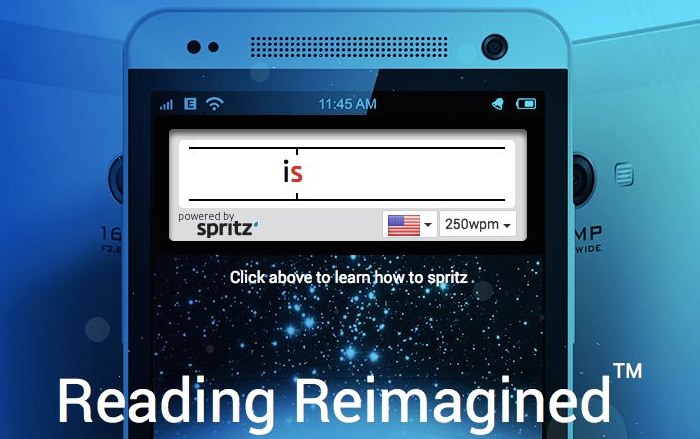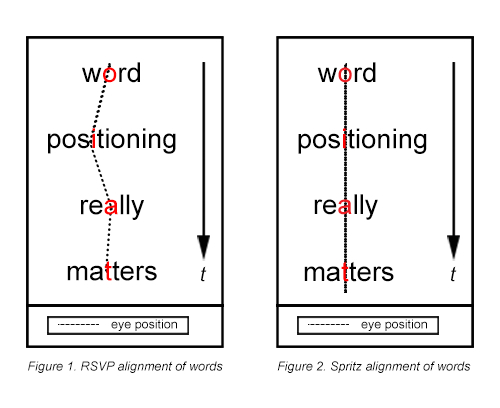
What is all the fuss about Spritz? If you were using a Spritz-enabled app, you would already have read to the end of this post and could tell us. But given that Spritz-enabled tech isn’t out there yet (it’s coming soon, though), here’s the scoop. Spritz is new speed reading technology that’s based on the theory that much of our time spent reading is wasted as our eyes move side to side. Display a word in one place, flash one word at a time and suddenly reading becomes much more efficient. Not only that, but by displaying just one word at a time, reading is suddenly possible on compact displays, like a smartphone or smartwatch. Being able to quickly (and painlessly) read e-mail, reports or even books on your suddenly makes the idea of wearable technology even more appealing.
I love e-books and being able to read on a mobile device, but I find smartphones are just too small to read on effectively. Even with the big, high resolution display in the latest flagship devices like , having more than a paragraph at a time makes the text too small to comfortably read. Enlarge the font and there’s too much time spend scrolling to the next page.
The idea of reading anything more than a notification on the 1.63-inch Gear 2 smartwatch (or even smaller Gear Neo) seems like a guaranteed headache to me. But that’s where Spritz comes in.
Spritz displays a single word at a time and places it optimally onscreen to virtually eliminate eye movement. Like this:

Spritz content gets rid of the 80% of reading effort used to move your eyes, allowing reading to speed up dramatically. Because it displays the text one word at a time, there’s no worries about trying to cram content into a small display with tiny fonts. Here’s what the technology looks like in action, first at 250 words per minute:

Then at 350 words per minute:

And then 500 words per minute:

If you master Spritz at 1,000 words per minute, you could finish a novel in under 80 minutes.
Will Spritz revolutionize reading? I suspect that’s going to depend on details, like how easy it is to slow the rate down on demand, or to back up and re-read a section.
For example, in one of my first jobs, I ran a high speed copier used to print university course material. Watching the paper fire out rapidly, I would speed read the contents and often catch typos (less appreciated than you might think once the material had actually gone to press). Scanning the material this quickly, I would get a reasonably good grasp of it, but if something really caught my interest, I still needed to read it through the old-fashioned way if I wanted to really absorb the material in detail.
Spritz may be similar to that, but this new technology seems likely to improve upon the experience.
Either way, Spritz represents a big step forward in speed reading, a better way to quickly consume text on a smartphone like the Galaxy S5 and potentially a killer app for wearables and smartwatches like the Gear 2 and Gear Neo. Personally, I’m looking forward to being able to scan tech news feeds on my phone at those times when I don’t have a tablet or laptop handy, but some people will undoubtedly use their newfound reading speed to tackle classics like War and Peace in record time.



